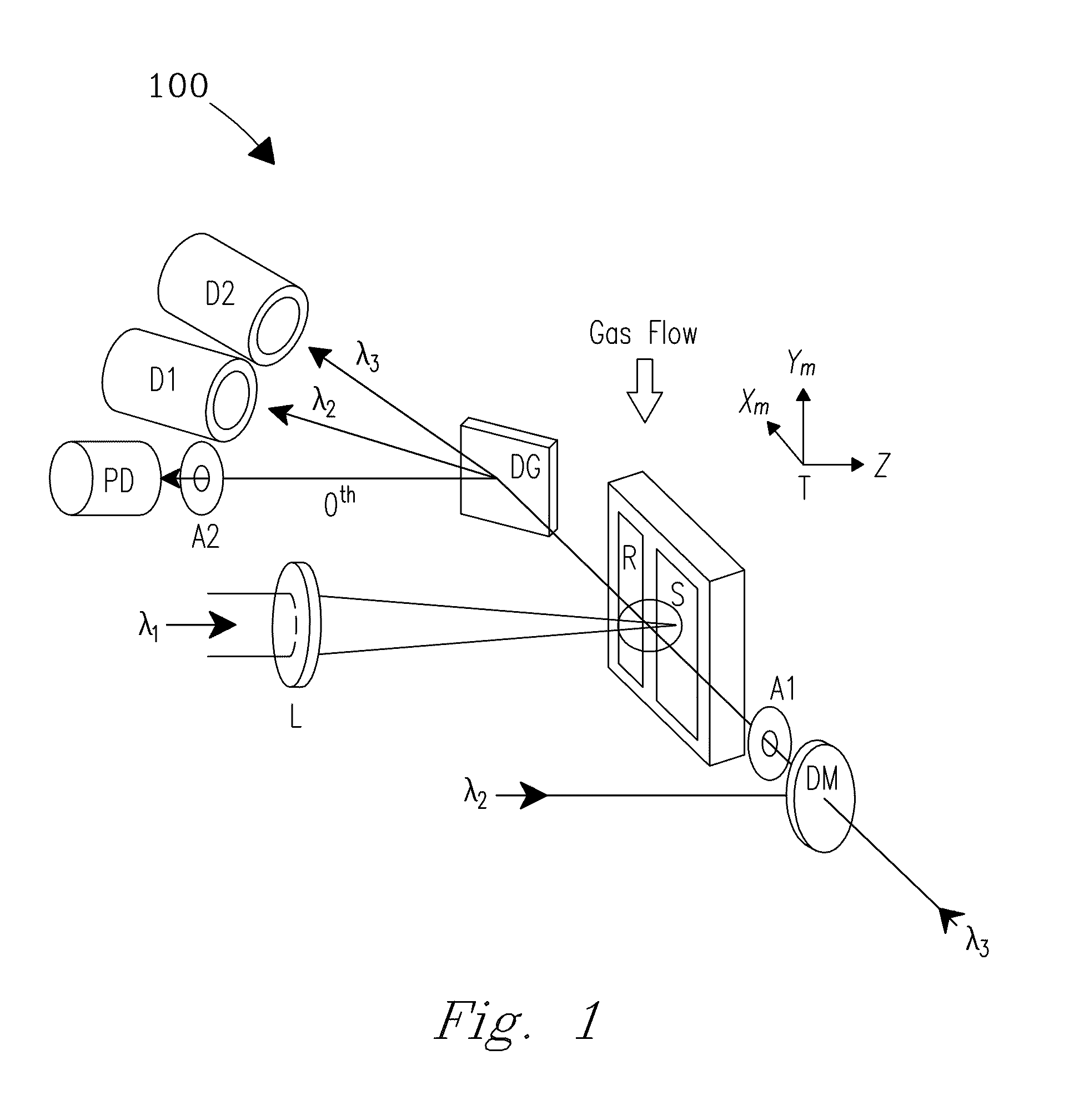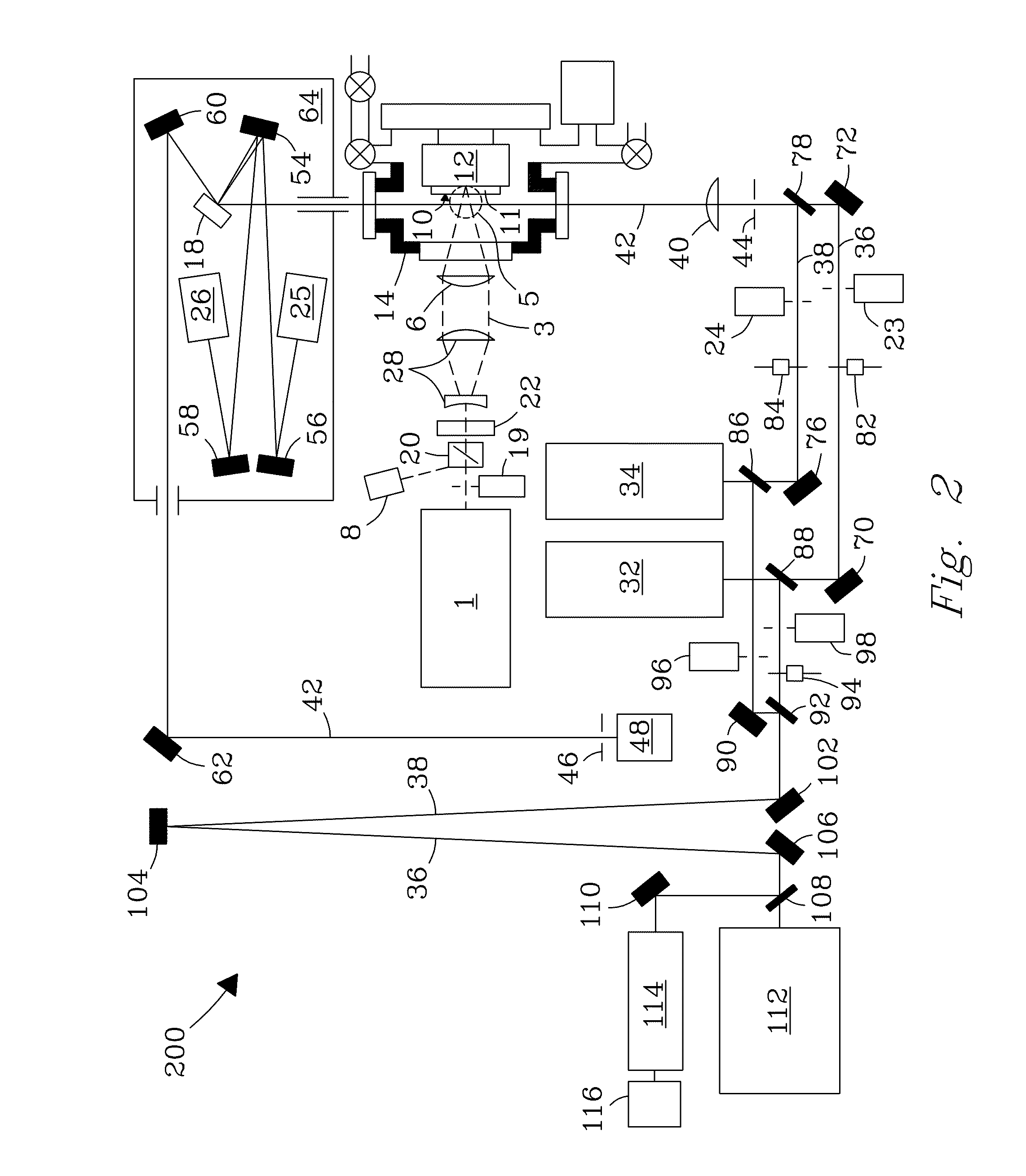System and method for high precision isotope ratio destructive analysis
a destructive analysis and high-precision technology, applied in the field of high-precision isotope ratio destructive analysis, can solve the problems of limiting the analysis timescale, high instrumentation cost, labor cost of highly skilled technicians, etc., and achieves high measurement spatial resolution, fast analysis time, and high precision isotope ratio determination.
- Summary
- Abstract
- Description
- Claims
- Application Information
AI Technical Summary
Benefits of technology
Problems solved by technology
Method used
Image
Examples
Embodiment Construction
[0029]A system and process are disclosed that provide high precision isotope ratio determination at high measurement spatial resolution and fast analysis time for destructive analyses for isotope ratio determination of relative isotope abundance distributions in collected gases, liquids, solids, and particulate samples. As used herein, the term “destructive analysis” (DA) means an analysis which consumes sample material and / or changes sample morphology and where the sample being measured is not returned to the batch it was taken from. The term encompasses analyses of bulk samples including, e.g., uniform liquids or solids where repeat analyses may be performed with replicate aliquots. In addition, analyses of non-uniform samples (e.g., atmospheric particulate collections) generically referred to as “Environmental Samples” (ES) herein can also be performed.
[0030]The term “high spatial resolution” as used herein refers to the ability to resolve individual particles in various complex ...
PUM
 Login to View More
Login to View More Abstract
Description
Claims
Application Information
 Login to View More
Login to View More - R&D
- Intellectual Property
- Life Sciences
- Materials
- Tech Scout
- Unparalleled Data Quality
- Higher Quality Content
- 60% Fewer Hallucinations
Browse by: Latest US Patents, China's latest patents, Technical Efficacy Thesaurus, Application Domain, Technology Topic, Popular Technical Reports.
© 2025 PatSnap. All rights reserved.Legal|Privacy policy|Modern Slavery Act Transparency Statement|Sitemap|About US| Contact US: help@patsnap.com



